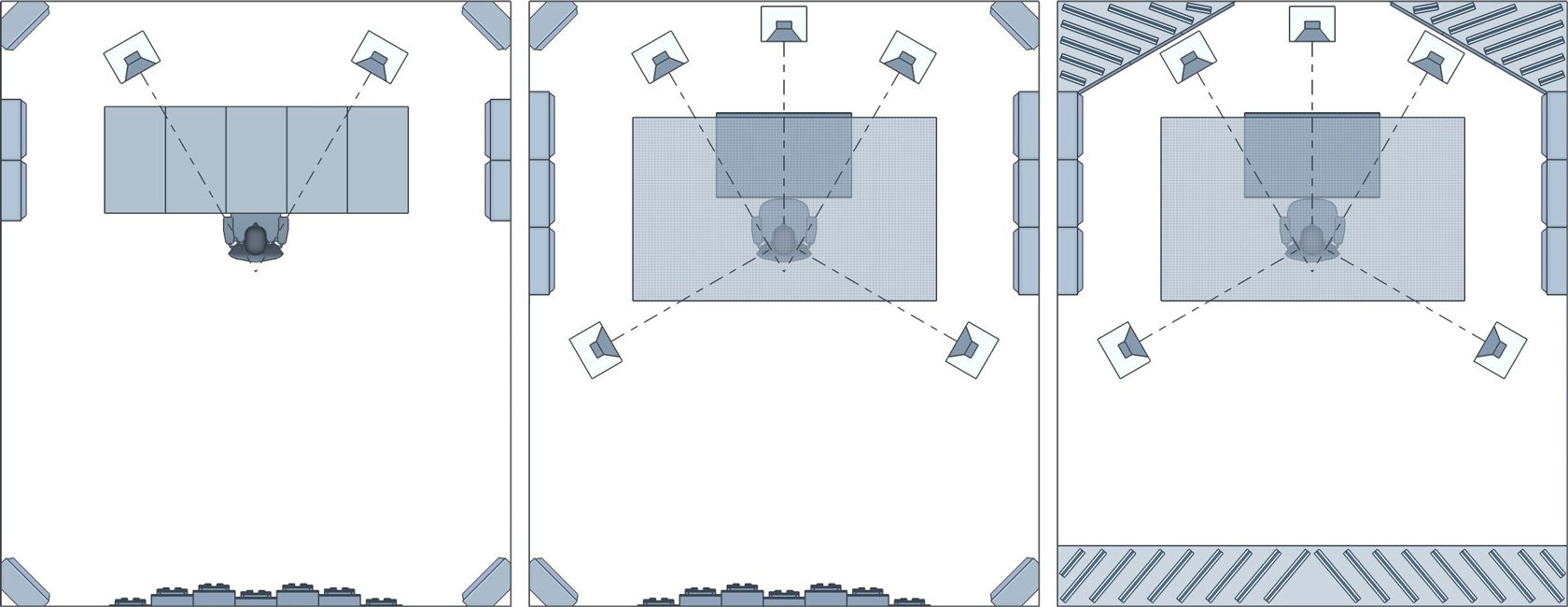Room 1 (Left): A lightly treated 2-channel mixing room with basic absorption and diffusion (typical in a project or home recording studio). You could use the same arrangement for a hi-fi listening room. This room shows only the minimum treatments required. It’s a good starting point but additional acoustic panels should be added to tame excessive liveliness and prevent potential flutter echo in the rear half of the room.
Room 2 (Center): A 5.1 surround sound mixing room using commercially available acoustic panels and bass traps. You could use a similar arrangement for a home theatre, but you would likely incorporate more diffusion and place the listening position and speakers closer to the back of the room.
Room 3 (Right): A 5.1 surround sound control room setup for critical listening. It uses broadband bass absorption systems build into the walls (giant DIY bass traps). You’ll see two versions of this setup: one with a purely absorptive rear wall (best for critical listening), one with a rear wall diffuser (to add a bit more liveliness to the space).
Room 3 is designed for mixing surround sound music, but a similar setup could be used for film post production and TV premix and final mixes.

